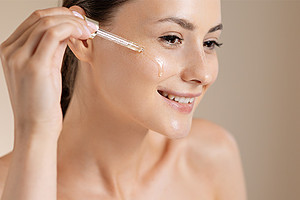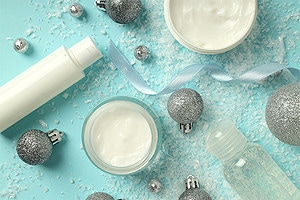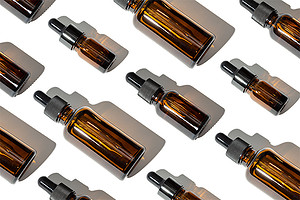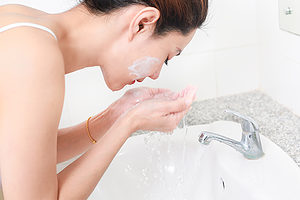The beauty industry has come up with numerous skin care products in the past years. Two such products are face serum and face toners.
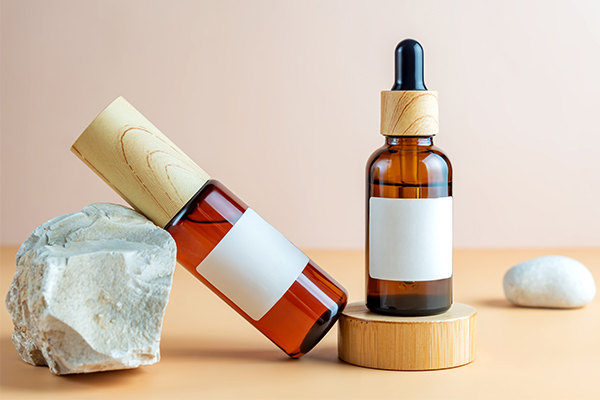
Face serums and toners are well-known yet confusing products to many. Although both products are crucial in your skin care routine, they have different purposes with unique perks.
Continue reading to understand the differences between face serums and toners and when and why to include these in your skin care routine.
Article Contents
Differences Between Face Serums and Toners
Face serums and toners are different in several ways.
Definition
Serums are lightweight moisturizers with a thicker consistency that contain active ingredients in high concentrations to hydrate skin without adding too much weight. They also target specific conditions by penetrating the skin deeply.
Toners are water-based skin care products with a lighter consistency that gently clear dirt and impurities from the pores. They moisturize, refresh, and protect your skin.
Toners are ideal for sensitive skin as they don’t strip out its natural oils.
Packaging
Face serums come in slightly smaller bottles. They come in opaque glass/plastic bottles with a pump dispenser or dropper to prevent the exposure of their active ingredient to light and air.
Face toners come in larger bottles. They come in plastic/glass bottles with a flip-top for easy dispensing.
Texture and Consistency
Face serums have a silky and lightweight texture with a thicker consistency. They are translucent with a nongreasy feel.
This nongreasy feel makes them ideal for layering with other skin care products such as sunscreen and moisturizers.
Toners have a watery consistency that provides quick absorption. They are transparent. Unlike other products, they have a high water content that provides a refreshing feel.
Function
Serums contain a high concentration of active ingredients that target specific skin issues such as wrinkles, fine lines, and pigmentation.
Toners restore the pH balance of the skin. They are exfoliants and contain skin-balancing ingredients.
Application
Serum application comes after toner. Simply dispense a quarter-size serum on your face and gently massage it onto your skin in circulation motions.
Toner application comes after cleansing. Take a microfiber cloth and soak it with the toner, and then gently sweep it on your skin in an upward motion.
Ingredients
Face serums contain active ingredients that target particular skin issues such as hyperpigmentation and fine lines. These ingredients include hyaluronic acid, peptides, vitamins, and antioxidants
They also contain specialized compounds that renew, brighten, and exfoliate the skin. These compounds include niacinamide, glycolic acid, and alpha arbutin
Toners contain hydrating agents that replenish skin moisture and hydrate the skin after cleansing. These agents include hyaluronic acid and glycerine
Some toners also contain mild astringents that tighten and tone the skin while balancing its pH. These astringents include chamomile and witch hazel.
Why Should You Add Serums and Toners to Your Skin Care Routine?
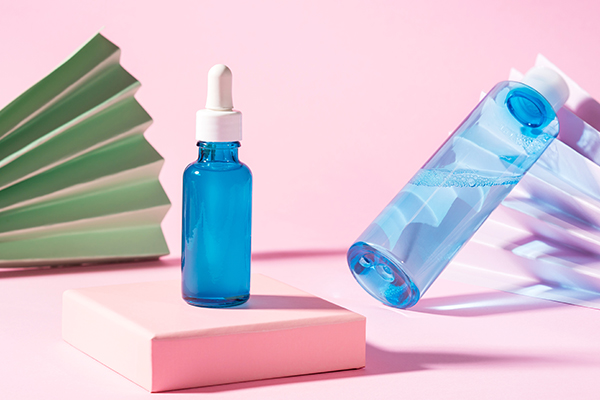
Face serums are a great addition to your skin care regimen. They provide intense hydration and target specific skin conditions, such as wrinkles and fine lines, by deeply penetrating the skin.
They are a powerhouse of active ingredients in high concentrations, and their consistent use can boost the radiance of the skin and improve its overall texture. They also even out skin tone and prevent environmental damage.
Toners are a secret weapon for your skin as they remove any last traces of impurities, grime, or dirt held up in your pores.
Toners are applied after skin cleansing to tighten pores, restore the skin’s pH balance, improve skin tone, and smooth out rough patches.
If you love to wear makeup or your skin is prone to acne, toners will go the extra mile to cleanse and close your pores.
How to Include Toners and Serums in Your Skin Care Routine?
Both toners and serums are crucial parts of the skin care routine. It is advised to use both these products simultaneously, one after the other, when prepping your skin for the day.
Follow these steps to apply toners and serums to your face.
Morning routine
- Wash your face with a mild cleanser to remove dirt.
- Apply toner to your face to eliminate any leftover impurities in your pores and minimize the pores’ appearance.
- Follow it up with a serum containing ingredients that target your specific skin conditions.
- Apply your preferred moisturizer.
- Wear sunscreen with an SPF of more than 30.
Nighttime routine
- If you have makeup on, remove it using a makeup cleanser.
- Wash your face with a mild and gentle cleanser.
- Apply toner to your face to eliminate any leftover impurities in your pores and minimize the pores’ appearance.
- Follow it up with a serum containing ingredients that target your specific skin conditions.
- Apply an undereye cream.
- Finish it off with a moisturizer.
General Queries
Are serums better than toners?
Both serums and toners are beneficial skin care products with different functions. You cannot substitute one with another.
However, serums are more helpful as they target specific issues, and a toner and a serum also work well together.
How many drops of serum must be applied?
The standard amount of serum application is pea sized or 3-4 drops. Gently pat it on your skin for quick absorption.
Final Word
Both serums and toners are excellent skin care products with exceptional benefits. They protect your skin from everyday stress and pollution.
Understanding the characteristics and properties of your skin can help you select the appropriate toner and serum to address your specific concerns.


